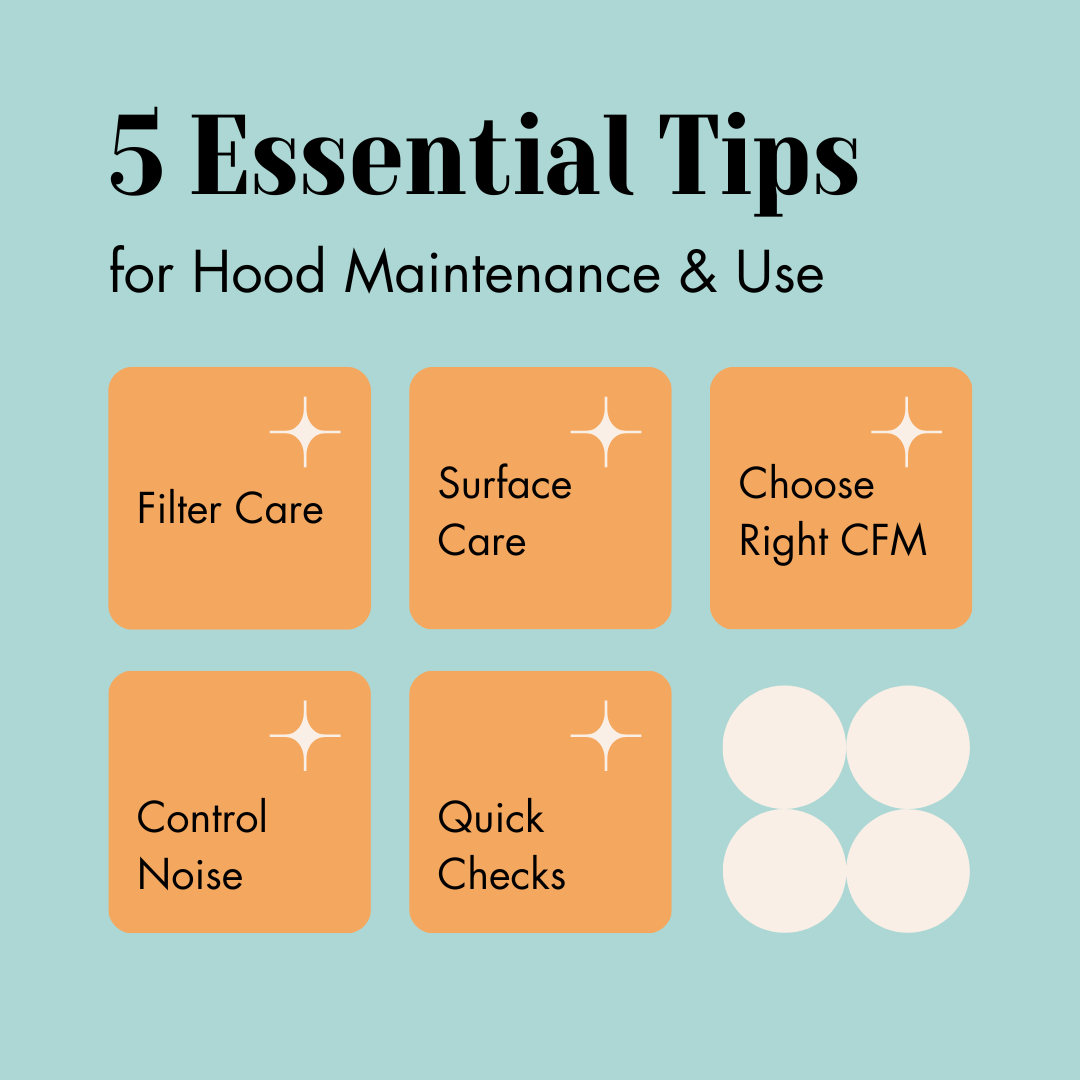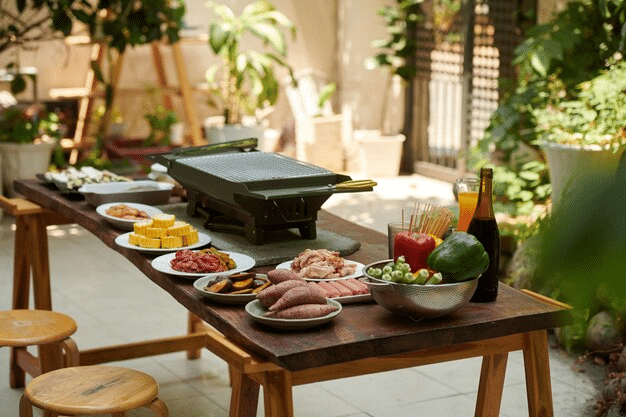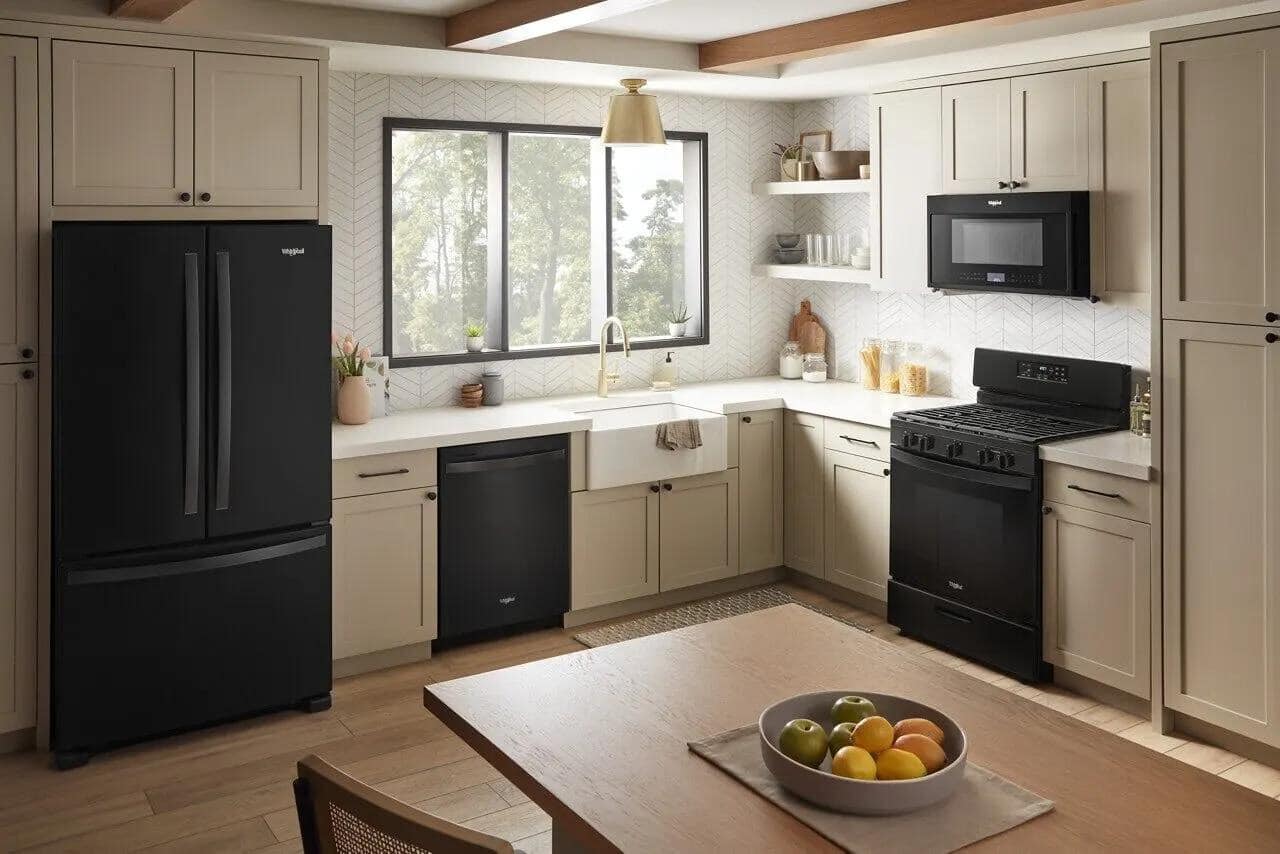What is the Standard Hood Height Above a Stove?
I know how hard it is to get kitchen measurements right. When I was setting up my kitchen, the trickiest part was figuring out the correct height for the range hood.
Too low, and it gets in the way. Too high, and it won’t catch cooking smells well.
The good news is that there’s a clear standard for hood height that works in most kitchens. It keeps your cooking space safe and helps your hood work better.
In this guide, I’ll show you the right measurements for both gas and electric stoves, plus some basic tips to help you set up your range hood perfectly.
What is the Importance of Range Hood Height
The correct hood height does two key things in your kitchen.
- First, it pulls away smoke, steam, and cooking odors before they spread. I learned this when I set my hood too high – my kitchen filled with smoke every time I cooked!
- Second, the right height keeps you safe. If you put the hood too low, you might bump your head while cooking. If you set it too high, it won’t catch grease, which could make your kitchen surfaces sticky or cause fires.
The right height also makes your hood work at its best. It must be close enough to grab cooking fumes but not so close that it gets in your way.
Getting this height right means less cleaning, better air quality, and a safer cooking space.
Standard Height for Electric Stoves

I measured this carefully in my own kitchen. The hood for electric stoves should sit 24 to 30 inches above the cooking surface.
This height works well for most home kitchens. It lets you see your pots clearly while still catching cooking fumes.
1. Standard Height for Gas Stoves
Gas stoves need a bit more space. The hood should be 28 to 36 inches above the cooktop. I found this extra height helps handle the stronger heat and flames from gas burners.
2. Height Tips for Different Hood Types
- Wall-mounted hoods work best at these standard heights
- Island hoods might need 2-3 inches more height due to air currents
- Under-cabinet hoods should stick with the lower end of these ranges
Hood Height Chart According to Different Hood Types
| Hood Type | Recommended Height Above Cooktop |
|---|---|
| Wall-Mounted Hoods | 24 to 36 inches |
| Under-Cabinet Hoods | 20 to 24 inches |
| Island Hoods | 28 to 36 inches |
| Downdraft Hoods | Integrated depends on a specific model |
| Professional-Grade Hoods | 30 to 36 inches |
| Custom Range Hoods | Refer to manufacturer guidelines |
| Ductless (Recirculating) Hoods | 20 to 30 inches |
Step-by-Step Guide to Calculate Your Ideal Hood Height
1. Check Manufacturer Specifications
- First, find your hood’s manual
- Look for the recommended installation height.
- Note the CFM (airflow) requirements
2. Understand Basic Measurements
- Standard cooktop height: 36-37 inches from floor
- Hood height range: 30-36 inches above the cooktop
- Bottom of hood: 66-72 inches from floor
3. Safety Clearances
- Side clearance: 9 inches from open flames
- No flammable materials within this space
- Check local building codes
4. Measurement Steps
- Start from floor level.
- Measure up to cooktop height (36-37 inches)
- Add recommended hood height (30-36 inches)
- The total should fall between 66-72 inches from the floor
5. Final Checks
- Verify height matches manufacturer specs.
- Ensure proper clearance on all sides.
- Double-check all measurements
Benefits of Proper Hood Height Installation
| Benefits | Details |
|---|---|
| Better Air Quality | The hood captures more cooking smoke, keeping the kitchen fresher. |
| Traps grease before it spreads, reducing mess. | |
| Reduces cooking smells in other rooms. | |
| Improved Safety | Heat stays controlled and contained, lowering fire risks. |
| Less grease buildup on kitchen surfaces. | |
| Provides ample space for safe cooking movements. | |
| Kitchen Comfort | Easy visibility while cooking, preventing head bumping. |
| Controls remain within easy reach. | |
| Hood lighting is more effective. | |
| Hood Performance | The fan operates at peak strength with reduced noise. |
| Effectively captures cooking vapors. | |
| Operates efficiently with less power consumption. | |
| Long-term Value | Hood’s lifespan is extended. |
| Walls stay cleaner for longer. | |
| Less frequent kitchen cleaning is needed. | |
| The kitchen appears well-planned and organized. |
Standard Height Guidelines to Follow

1. Basic Hood Height Rules
- Electric cooktops: 24-30 inches from cooking surface
- Gas cooktops: 28-36 inches from cooking surface
- Island hoods: Add 2-3 extra inches to these measurements
2. Floor-to-Hood Measurements
- Start at floor level.
- Total height should be 66-72 inches.
- Add your cooktop height (usually 36 inches)
- Leave proper space above the cooking surface
3. Side Clearance Rules
- Keep 9 inches clear on each side.
- There are no cabinets within this space.
- Check local rules for exact requirements.
4. Special Situations
- Tall cooks might need extra height.
- Small kitchens might need careful planning.
- Professional stoves need more clearance
5. Height Based on Hood Type
- Under-cabinet hoods: Stay closer to minimum height
- Wall-mounted: Follow standard ranges
- Professional grade: Check specific requirements
Some Common Mistakes to Avoid
| Common Mistakes | Details |
|---|---|
| Not Checking Manufacturer Guidelines | Personal experience shows that each hood model has specific height needs. |
| Skipping the manual can lead to poor performance. | |
| Mounting the hood at the wrong height affects its functionality. | |
| Incorrect Height Measurements | Starting measurements from the wrong point can cause errors. |
| Failing to use a level when marking installation spots leads to misalignment. | |
| Forgetting to factor in the stovetop height affects final placement. | |
| Safety Distance Errors | Cabinets placed too close to the cooking area can create hazards. |
| Insufficient side space can restrict airflow and functionality. | |
| Ignoring minimum clearance requirements violates safety standards. | |
| Installation Oversights | Not verifying if the wall can support the hood’s weight can result in failure. |
| Poor duct placement can lead to inefficient ventilation. | |
| Overlooking local building codes can lead to non-compliance issues. | |
| Size and Power Mismatches | Choosing a hood that is too small for the stove limits efficiency. |
| Not matching the hood’s power to your cooking habits affects performance. | |
| Picking a size that doesn’t complement the kitchen design can look disproportionate. |
Common Factors Influencing Hood Height
1. Stove Type and Size
- Electric stoves need less space (24-30 inches)
- Gas stoves need more height (28-36 inches)
- Big cooking surfaces need wider hoods
2. Room Layout
- Kitchen ceiling height limits options
- Cabinet placement affects the hood position.
- Space for hood ducting matters
- Window locations can change hood spots.
3. Hood Power and Design
- Stronger hoods can work at higher spots.
- Wider hoods catch more cooking fumes.
- The hood shape affects its working height.
- Airflow needs to affect the mounting height.
4. Cooking Style
- High-heat cooking needs more space.
- Frequent cooking needs better fume control.
- Different cooking methods need different heights.
- Pot and pan sizes affect hood placement.
5. User Height and Comfort
- Tall people need more headroom.
- Short people need reachable controls.
- A clear view of the cooking surface matters.
- Easy cleaning access is important.
Key Tips for Hood Maintenance and Use to Follow

Conclusion
Getting your range hood height right isn’t just about following numbers. I’ve learned that the right height makes cooking safer, cleaner, and more fun.
Remember the basics: 24-30 inches for electric stoves and 28-36 inches for gas stoves from your cooking surface. These heights work best to keep your kitchen air clean and fresh.
Want to make sure you’ve got it right? Grab a measuring tape and check your hood height today. If it’s not quite right, small adjustments can make a big difference in how well your hood works.
Got questions about your hood setup? Leave a comment below.
I’d love to hear about your kitchen experiences and help you find the perfect height for your range hood.







